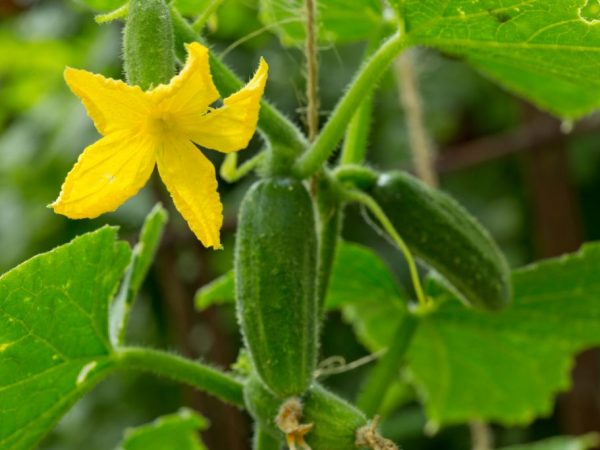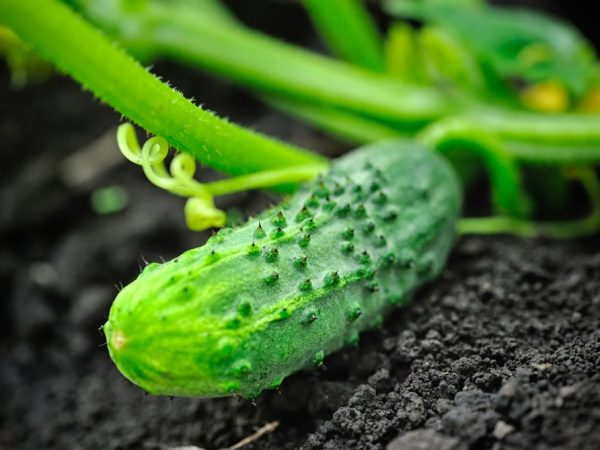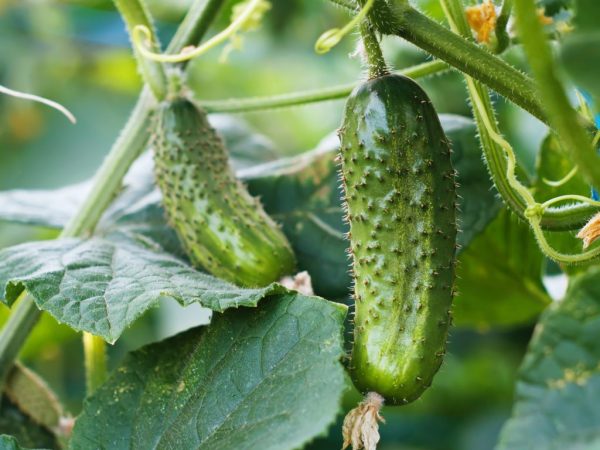Characteristics of cucumber variety Amur f1
Cucumbers are the main vegetable crop in the garden. They do not require special care. With the help of the Amur cucumber variety, chefs prepare delicious cold salads. They are perfect for preservation.

Characteristics of cucumber variety Amur f1
The main advantage of this variety is its resistance to sudden changes in weather and climate. The correct cultivation technology will allow you to get an excellent harvest.
Variety characteristic
Cupid f1 is a hybrid variety of early ripening. Pollination occurs at the expense of the shoulders. It bears excellent fruit when cultivated in the open field. Can be grown in greenhouses or other indoor areas.
According to the description of the breeders, it is resistant to the following factors:
- temperature drops;
- frost;
- overdrying or waterlogging of the earth;
- exposure to pests.
Has an average level of climbing. It takes 40-45 days from germination to vegetation.
Description of the bush
Vigorous, indeterminate plant. Cupid has weak branching, so there is no need for shaping. In the node of the bush, no more than 1-2 ovaries are formed. About 8 fruits are formed on it.
The leaves of the Amur plant have a dark green tint. The size is medium, the waviness of the edges is weak. The bush gives the main harvest in the first month of fruiting. In the description of Amur cucumbers, it is indicated that they have a high yield - from 12 to 14 kg per 1 sq.m.
Description of fruits
The Amur Zelentsy are 12-15 cm long. The weight is no more than 110 grams. The skin is dark green, with pimples and faint light stripes along the entire length. The pubescence of the Amur f1 variety greens is frequent.
Fruit characteristics:
- thin and dense skin of dark green color;
- the surface is covered with fluff and tubercles;
- fusiform, oval shape;
- do not give bitterness;
- the average length of a cucumber is 15-17 cm.
Cucumber Cupid is consumed fresh. The pulp is tender inside, the skin is crispy. Used for making sushi, cold salads, vegetable cuts. Perfect for conservation.
The fruits must be picked every 2 days. In case of drought, once a week.
Growing

Plant care does not require special skills
Growing cupid f1 cucumbers is easy. The technology is no different from other vegetable varieties. You can use the seedling and non-seedling method. In greenhouses 3-4 bushes of cucumbers Cupid 1801. On open ground - 4-6 bushes per 1 sq. M.
Seed preparation
A proven method is to treat the seeds with a manganese solution. This is done just before planting. They should lie in the solution for 20 minutes. So the fruits will be more resistant to pests and diseases.
Cupid cucumbers whose description says that they are undemanding to external conditions, any soil is suitable. Main requirements:
- sunny side;
- body of water nearby;
- fertile soil.
It is necessary in the fall to dig well the land chosen for growing F1 cucumbers. Repeat the procedure in early spring. It is important to apply 3-5 kg of manure before planting the seeds.
If the cultivation is on black soil, then the amount of fertilizer is minimal. If on clay soil - the maximum.
Landing
Cucumber Cupid f1 whose description says about the classic planting, thermophilic. With improper care, the fruits may die from frost. If the vegetable is grown outdoors, cover the seeds and first sprouts with foil.
The distance between the rows is 1-1.5 m. The f1 cucumber bushes are planted every 15 cm.
Seed planting time:
- in open ground without shelter - May 25-30;
- in the greenhouse - May 10-15.
In the first case, the first shoots will appear on May 20-25, in the second - on June 5-10. In the southern regions, planting of dry seeds can be carried out a week earlier, in the northern regions - 7 days later.
Seedless way
The technology of planting cucumbers Cupid 1801 f1 in a seedless way:
- A shallow groove (up to 7 cm) is dug in the garden bed.
- Water is poured into the grooves to moisten the soil.
- Seeds are laid out every 15 cm.
- They are sprinkled with a 2-3 cm layer of soil.
- Water the garden with a watering can.
- Cover the soil with plastic wrap.
Nuance - with early planting, the soil is covered with a film 5 days before planting. So the earth warms up, and the cucumbers will not die as a result.
With the seedling method, the seedlings are prepared a month before the planned disembarkation. Each grain is placed in a separate small glass. The soil should be soft and nutritious. It mixes with leafy humus. Keep seedlings in a well-lightened place without drafts. She will be ready to plant when 1-2 leaves and a strong stem appear.
Care

Good Care Affects Yields
After preparing the seeds and soil, it is necessary to take proper care of the plant. It is traditional, the same as in other varieties of cucumbers.
Basic procedures:
- Watering. Should be regular as the soil dries. In hot summer, water at least 2 times, in rainy and cold - 1. Water only the root. It is not advisable to get on the stem and leaves.
- Loosening. It is carried out in the root area. It is especially necessary when a strong crust appears on the soil. This procedure will enrich the earth with oxygen and accelerate the growth of cucumbers.
- Mulching. Peat, leaves, sawdust are used as mulch. The best remedy is straw. Helps to protect the soil from weeds, temperature changes, waterlogging.
- Weed removal. They destroy the root system. It must be destroyed at the first sign of appearance.
The rules are simple, they should not be neglected. The growth rate of the vegetable, its quality and the degree of yield depend on this.
Diseases and pests
The hybrid is resistant to pests and diseases.
Resists fungal infections and parasites well. But with improper care, high humidity levels, and other conditions, it is negatively affected by parasites.
Common diseases and pests of cucumbers 1801 F1:
- Powdery mildew is a white bloom that causes the leaves to turn yellow. Appears at low temperature conditions. In the hot summer she is gone. To combat, you can use a solution of colloidal sulfur.
- Cladosporium - dark brown spots on fruits and leaves. They are rapidly increasing in size. For treatment, stop watering and treat the vegetable crop with Brodsky liquid.
- Sclerotinia or white rot - white spots on the leaves that darken after 1-2 days. Affected plants are removed. Others are treated with lime or crushed coal.
- Whitefly - larvae on the inside of a cucumber. Loosening the soil or planting tobacco nearby will help.
The danger is ants. They transfer aphids and destroy the root system. To fight, their nests are poured with kerosene. Another way is to pour boiling water over the soil.
Conclusion
Cucumbers of the Amur f1 variety are a high-yielding hybrid. To obtain a high-quality harvest, the soil must be regularly watered, fertilized, and cleaned from weeds. Among the 2 planting methods, the best one is seedling. It is important to prepare seeds and soil in a timely manner for planting.
According to the description of the Amur cucumber variety, the hybrid is resistant to diseases and parasites. But it can succumb to their negative influence. The variety is perfect for preserving, preparing salads, decorating dishes.


